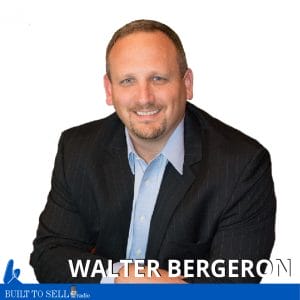About this episode
Small service-based businesses are typically not worth very much, but Walter Bergeron made one simple change to his business model that garnered a $10 M acquisition offer.
To read a transcript of this episode, click here.
Walter Bergeron started a small company servicing circuit boards for large food processing plants. It was a “break/fix” business with lumpy demand and cash flow.
Struggling to grow, Bergeron starting offering a membership model where instead of calling when they had a machine to repair, subscribers paid a monthly fee so they could have their circuit boards serviced at any time.
The switch to a membership model transformed the business and Bergeron quickly grew the company to $7 million in annual sales, at which point he was offered $10 million to sell it.

About Our Guest
Walter Bergeron began his entrepreneurial journey when he was just 12 years old, detailing cars in his parents’ driveway. Over the last three decades, he has built and sold six businesses, with his latest deal topping $10 million. He is a serial entrepreneur, Marketer of the Year, and a three-time bestselling author. In his latest bestselling book, 8 Figure Exit Formula, he shows other driven entrepreneurs how to exponentially build their businesses through acquisitions, and then sell their business over and over so they can experience their own 8 figure payday.


